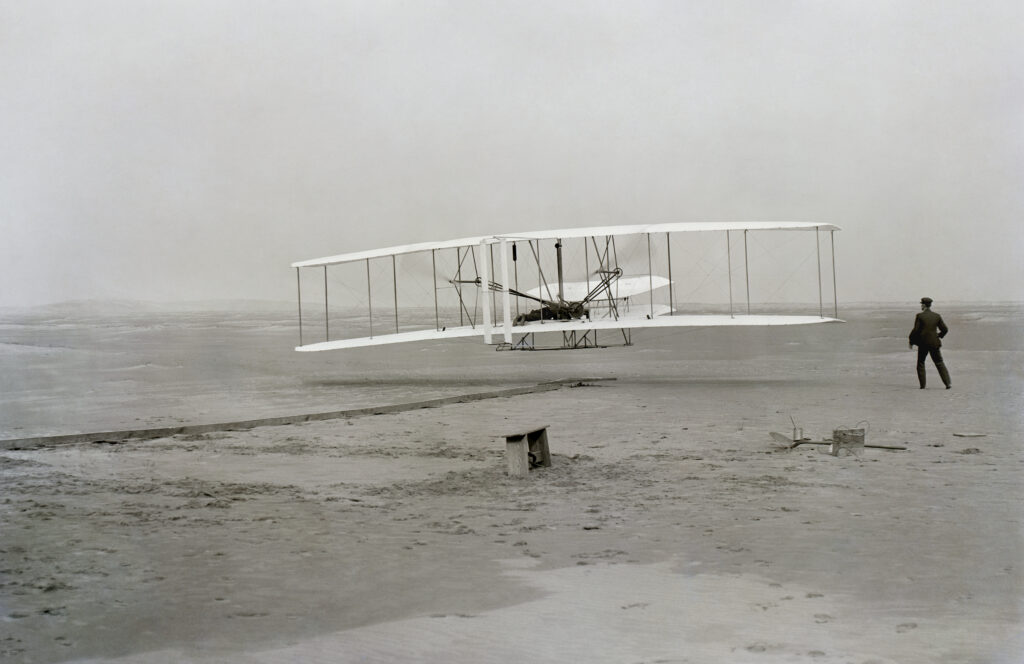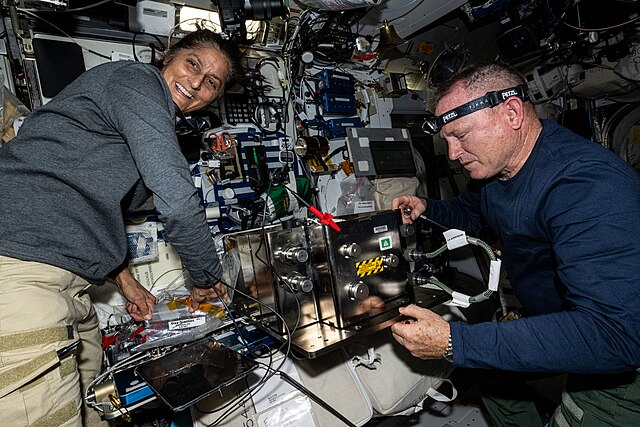By Evergreen Volunteer Scott Malandrone
When the Lockheed F-117 Nighthawk (serial number 85-0816), alias Lone Wolf, arrived at Evergreen Aviation & Space Museum in late 2023 for restoration and display, hundreds of guests flocked to its exhibit to welcome the aircraft to its new home. As the world’s first operational stealth aircraft, the F-117 is renowned for ushering in a complete paradigm shift in air warfare.
Signing the F-117 Lone Wolf Nose Art
Of the first guests to see Evergreen’s new exhibit were the Moore family: father Robert Moore, a retired Certified Public Accountant and oil-painting hobbyist; mother Marilyn Moore; and son David “Never” Moore, Air Force Base Vice Wing Commander and F-117 pilot.
David had flown the Lone Wolf over Serbia in Operation Allied Force in 1999. In fact, he was honored by having his name placed on the canopy rail during his command time with the 8th Fighter Squadron, the “Black Sheep,” and the 49th Fighter Wing.
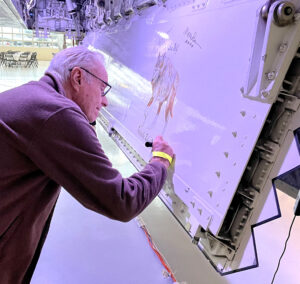
“My dad was surprised to see the painting, because he had forgotten that he painted it,” David said. “He was even more surprised to see that it hadn’t been painted over.”
Since Robert did not originally sign his artwork during his time with the F-117, David shared the story of the 2006 event with an Evergreen docent.
“I pulled a museum staff member aside and said, ‘Hey, see that [artwork] on the bomb bay door? My Dad painted that!’ And they said, ‘Really? Let’s get a picture!’ So, they brought us under the airplane and Dad signed it.”
Be on the lookout for David’s forthcoming book, Have Blue Sky, which is based on the 25-year operational flight history of the F-117 Stealth Fighter.
Evergreen’s F-117 Lone Wolf History
“I remember seeing the original Lone Wolf artwork on the bomb bay door in the ‘90s,” David said, “but when I returned [to Holloman Air Force Base] in the 2000s, the door had been painted over white. My parents were coming for a visit in March of 2006, so I asked my dad, who is a terrific artist, to bring his oil paints as 816 was my airplane.”
The 816, aka the Lone Wolf, is a veteran of three combat operations: Just Cause (1990), Desert Storm (1991) and Allied Force (1999). It received its name from former United States Air Force crew chief David Brahe.
“I was thinking of what would be a good name for a [fighter] aircraft that flies at night. Then it came to me: What’s alone, a hunter … I know, a wolf!” Brahe said.
Repainting the F-117 Lone Wolf
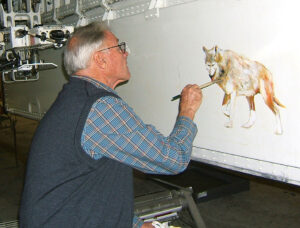
After the end of Operation Desert Storm, the combat veteran F-117s were flown back to the USA and the majority of the artwork was either painted over or removed due to a sanitization order.
Lone Wolf, however, made a return to duty in 2006. In March of that year, the second version of the wolf artwork would be applied to the aircraft by Robert Moore.
“My son asked me to paint the image of a wolf on the bomb bay door. When my wife Marilyn and I came to the [air]base, David and I looked at pictures of wolves online and the right image showed up.”
What is Nose Art?
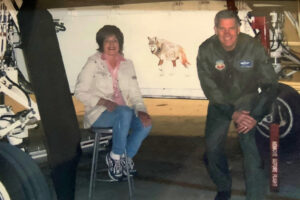
Artwork on aircraft, often known as nose art, began during World War I and gained significant popularity in World War II. Pilots and crew members painted distinctive designs on their planes which boosted morale, fostered camaraderie, and personalized the otherwise uniform machines. While not always on the nose of a plane, nose art refers to the decorative painting or design on an aircraft, typically military airplanes.
The F-117 was not allowed to have nose art, for good reason. Its signature black paint job is actually radar-absorbing material (RAM) that, coupled with the fighter’s unusual shape, allowed it to evade detection. The paint in nose art would make the F-117 detectable. Creative crew chiefs, pilots, and specialists found a new canvas for their art on the inside of the bomb bay doors. Besides Lone Wolf, other F-117s carried names such as “The Toxic Avenger,” “Midnight Rider,” “Final Verdict,” and “Necromancer.”
See the F-117 Lone Wolf In-Person
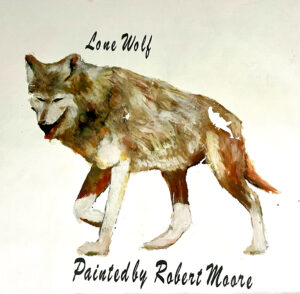 Evergreen’s F-117, the Lone Wolf, is currently on display in its pre-restoration condition in the Evergreen Space Museum. If you look closely, you can see Robert’s signature on the aircraft’s bomb bay door.
Evergreen’s F-117, the Lone Wolf, is currently on display in its pre-restoration condition in the Evergreen Space Museum. If you look closely, you can see Robert’s signature on the aircraft’s bomb bay door.
Learn more about the Lockheed F-117 Nighthawk on our F-117 Guided Tour! Ask to sign up for this experience at our Aviation Desk upon your arrival. Purchase your tickets in advance here. You can also donate to the F-117’s restoration here.
